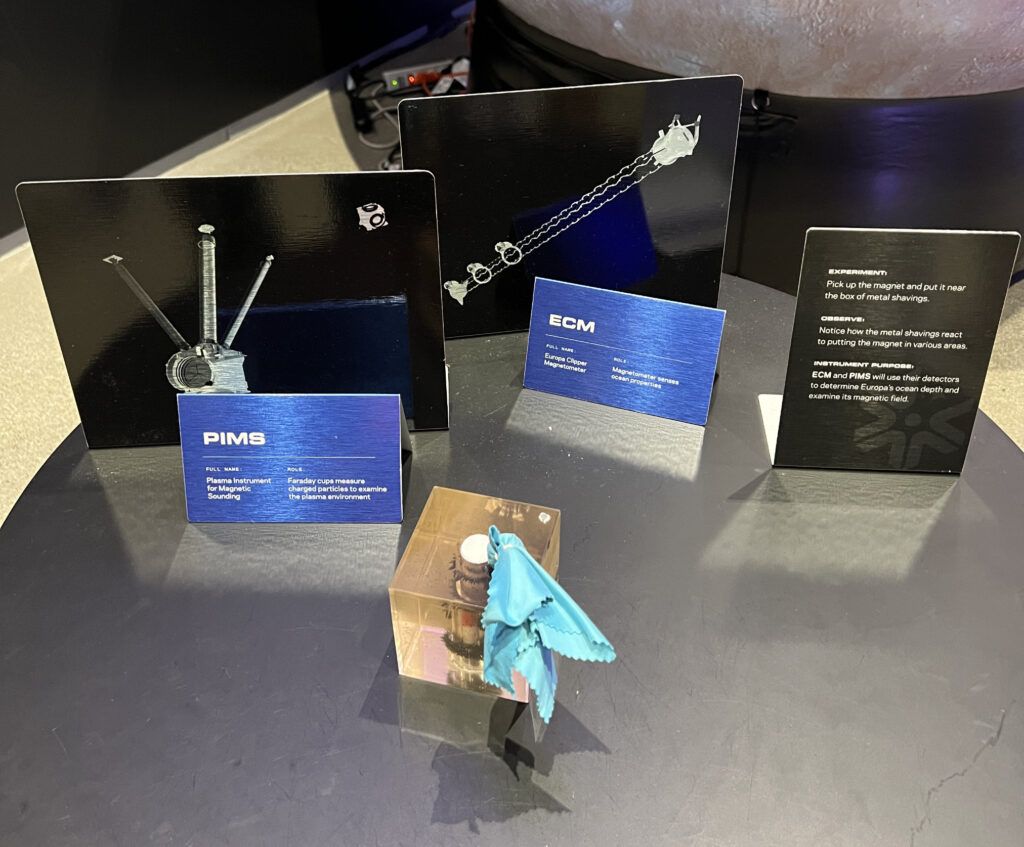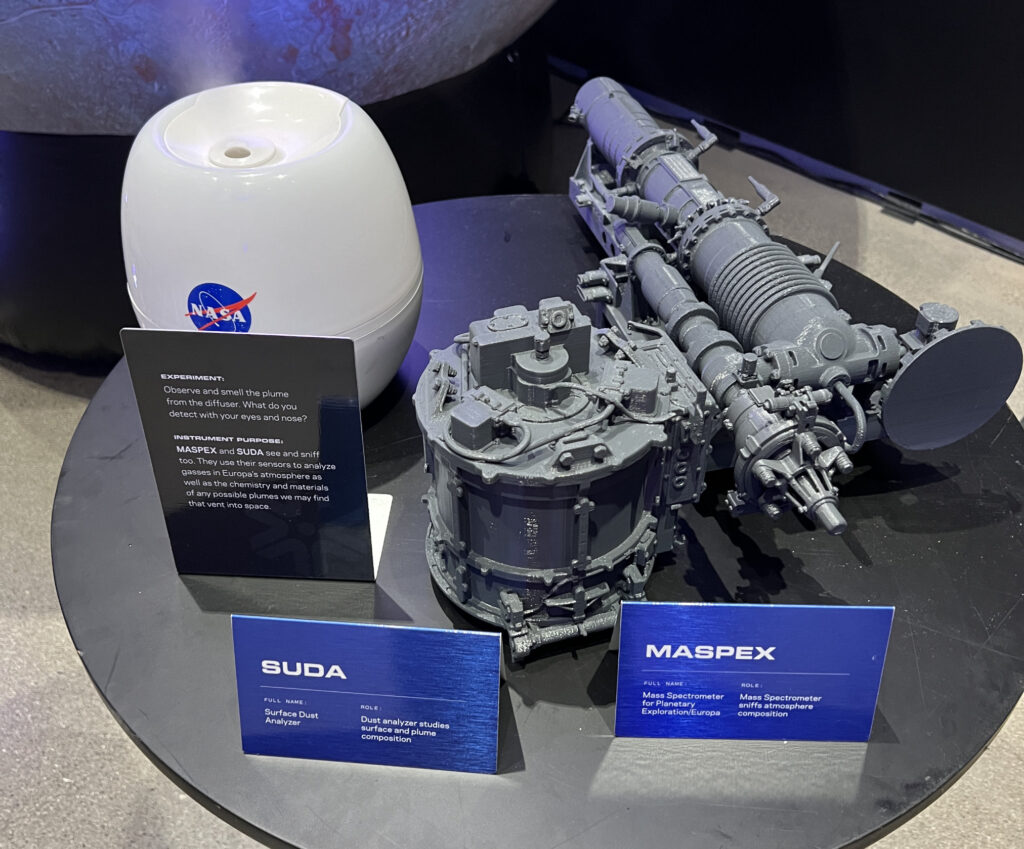Back in September my family when to an exhibit and talk at the Academy of Science in San Francisco by NASA on their mission to Europa. This mission is set to launch no later than 12:06 p.m. EDT, Monday, Oct. 14th.

Where might we find life beyond Earth within our solar system? While Mars and Venus have garnered attention, the moons of our gas giants—such as Saturn’s Enceladus and Titan—hold fascinating possibilities. Enceladus, with its water plumes, has already hinted at subsurface oceans ripe with life’s building blocks. Jupiter’s moon Europa stands out as a prime candidate for such mysteries, prompting NASA’s ambitious Europa Clipper Mission, set for a launch in October 2024, with arrival at Jupiter planned for 2030.
Why Europa?
Europa, encased in a thick ice shell, is believed to harbor a vast ocean beneath its frozen exterior, heated by tidal forces from Jupiter that could create a habitable environment for simple life forms like bacteria. This moon’s potential for an internal ocean filled with salty water similar to Earth’s oceans, coupled with the chemical nutrients that life requires, makes it an ideal candidate for exploration.
Mission Instruments and Goals
The Europa Clipper will carry an array of ten sophisticated instruments to probe Europa’s ice shell, ocean, and potential for life. These include:
- Cameras: To capture high-resolution visual and thermal images.


- Magnetic Field Probes: To detect the subsurface ocean by studying changes in Europa’s magnetic field.

ECM: Magenetometer senses ocean properties.
- Infrared Spectrometer: To penetrate the ice and map the hidden ocean’s depth and salinity.

- Spectrographs: For analyzing the composition of the surface and any plumes, helping detect water vapor and other vital chemicals.

MASPEX: Mass Spectrometer

These instruments are poised to transform our understanding of Europa by mapping its ice shell, investigating the ocean’s chemistry, and searching for biosignatures.
Conclusion
The scientific community and space enthusiasts eagerly anticipate the insights that the Europa Clipper might unveil about Europa’s ability to support life. The mission promises to enrich our knowledge of celestial habitability, potentially answering the age-old question: Are we alone in the universe?
For more detailed information on the mission, you can visit the official NASA Europa Clipper Mission page.
